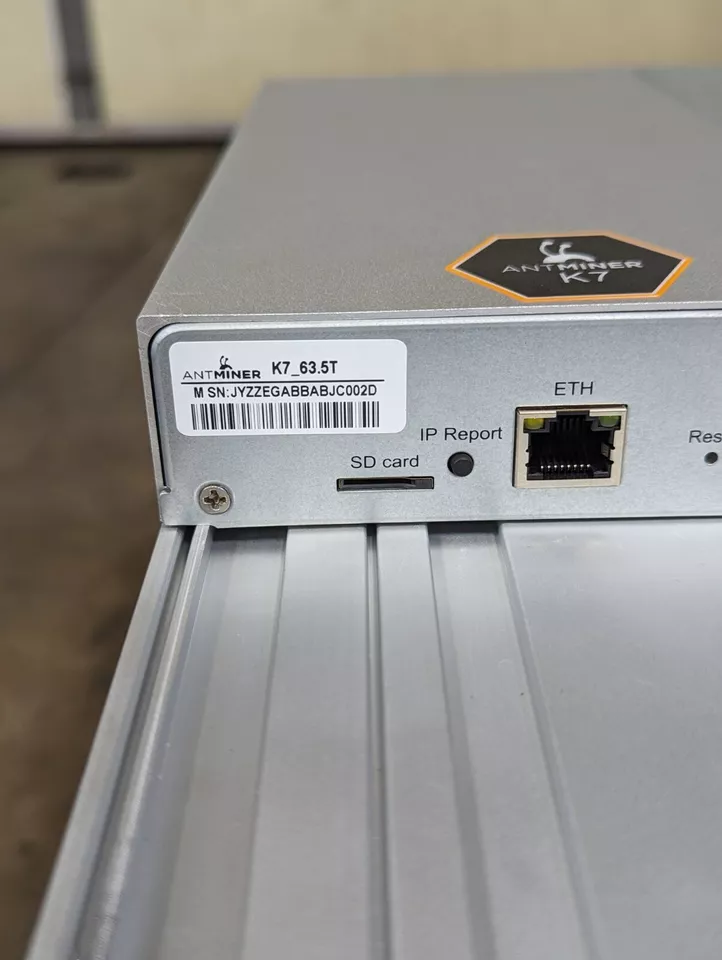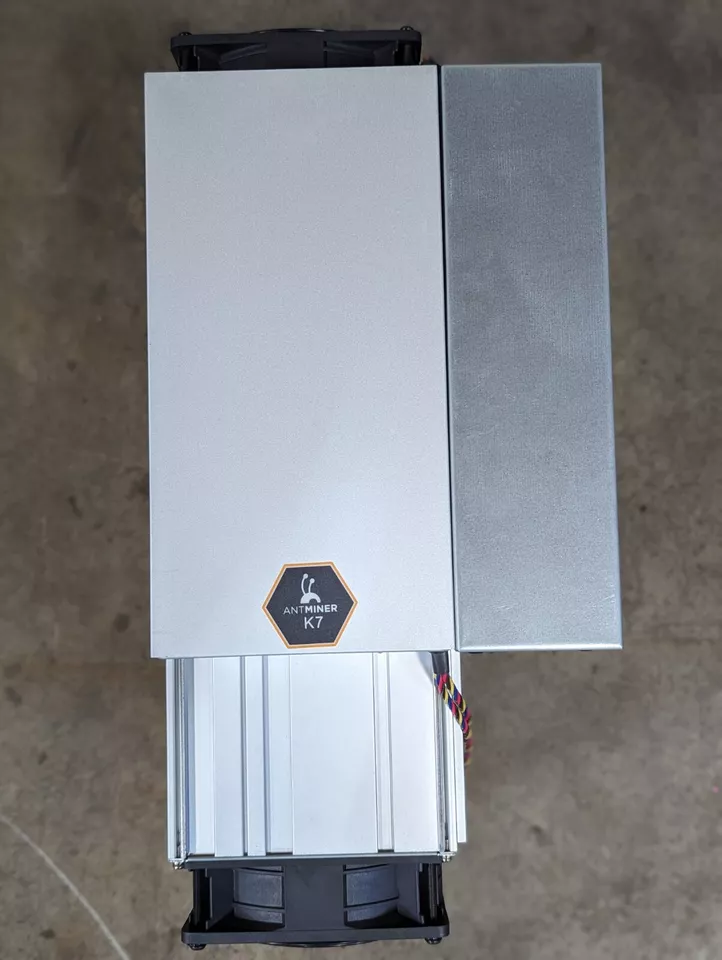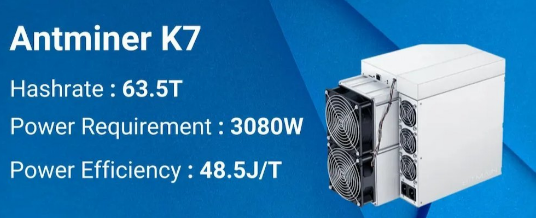Best Network Setup for CKB Miner K7 to Maximize Efficiency
Cryptocurrency mining has evolved into a highly competitive industry, where efficiency and optimization are paramount to success. For miners focusing on the CKB (Nervos Network) cryptocurrency, the CKB Miner K7 by Bitmain stands out as a top-tier solution. Designed specifically for the Eaglesong algorithm, the K7 offers unmatched performance and energy efficiency. However, to truly maximize its potential, miners must pay close attention to their network setup. This article explores the best practices for configuring your network to ensure the CKB Miner K7 operates at peak efficiency, delivering the highest possible returns on your investment.
Introducing the CKB Miner K7
Before diving into network optimization, it’s essential to understand the capabilities and specifications of the CKB Miner K7. This cutting-edge mining rig is engineered by Bitmain, a global leader in cryptocurrency mining hardware. With a typical hashrate of 63.5 TH/s (±3%), the K7 is one of the most powerful miners available for the Eaglesong algorithm. Its energy-efficient design consumes just 3080W (±5%), achieving a power efficiency of 48.5 J/TH at 25°C ambient temperature. This balance of performance and efficiency makes the K7 a standout choice for CKB mining.
The K7 features 276 state-of-the-art hash chips distributed across three hash boards, ensuring robust and consistent performance. Its dual AC input design (200-240V, 50-60Hz) enhances reliability, while its compact dimensions (430 x 195.5 x 290mm) allow for high-density deployments. Ethernet connectivity (10/100M) ensures seamless integration into existing network infrastructures, making it adaptable to various mining environments.
Why Network Setup Matters
In cryptocurrency mining, a well-optimized network is crucial for maintaining uninterrupted operation and maximizing efficiency. The CKB Miner K7 relies on a stable and high-speed internet connection to communicate with mining pools, submit shares, and receive updates. Any network latency, downtime, or bandwidth limitations can directly impact mining performance, leading to reduced profitability.

Moreover, as mining operations often involve multiple rigs, ensuring efficient network management becomes even more critical. A poorly configured network can result in bottlenecks, increased latency, and unnecessary downtime, all of which can erode your mining returns. By implementing the best network setup practices, you can ensure that your CKB Miner K7 operates seamlessly, delivering optimal performance and maximizing your mining rewards.
Key Considerations for Network Setup
#### 1. High-Speed Internet Connection The foundation of any efficient mining network is a high-speed internet connection. The CKB Miner K7 requires a stable and fast connection to communicate with mining pools and submit shares promptly. A minimum upload speed of 5 Mbps is recommended for a single miner, but if you’re operating multiple rigs, you’ll need to scale up accordingly to avoid bottlenecks.

Opt for a reliable internet service provider (ISP) with low latency and minimal downtime. Fiber-optic connections are ideal due to their high bandwidth and low latency, but if fiber isn’t available, a high-speed DSL or cable connection can suffice. Regularly monitor your connection speed and latency to ensure consistent performance.
#### 2. Dedicated Network for Mining To avoid interference and ensure optimal performance, consider setting up a dedicated network exclusively for your mining operations. Sharing your network with other devices or applications can lead to bandwidth contention, increased latency, and potential downtime.

A dedicated network allows you to prioritize mining traffic, ensuring that your CKB Miner K7 receives the necessary bandwidth and resources. This can be achieved by setting up a separate router or VLAN (Virtual Local Area Network) for your mining rigs. Additionally, using Quality of Service (QoS) settings on your router can help prioritize mining traffic, further enhancing network efficiency.
#### 3. Ethernet Over Wi-Fi While Wi-Fi offers convenience, it’s generally not recommended for mining operations due to its susceptibility to interference and latency. Ethernet connections provide a more stable and reliable connection, ensuring seamless communication between your CKB Miner K7 and the mining pool.
If your mining setup requires long cable runs, consider using high-quality Ethernet cables (Cat6 or Cat6a) to minimize signal loss and maintain high data transfer speeds. For larger mining farms, network switches with sufficient ports and bandwidth can help manage multiple rigs efficiently.
#### 4. Redundancy and Failover Network downtime can be costly in cryptocurrency mining, as it directly impacts your ability to submit shares and earn rewards. Implementing redundancy and failover mechanisms can help mitigate this risk. Consider using a dual-WAN router that supports multiple internet connections, allowing your network to switch seamlessly to a backup connection if the primary one fails.
Additionally, configuring failover pools can ensure that your CKB Miner K7 continues to operate even if the primary mining pool experiences issues. This approach minimizes downtime and ensures continuous mining activity.
#### 5. Monitoring and Management Regularly monitoring your network performance is essential for identifying and addressing potential issues before they impact your mining operations. Network monitoring tools can provide real-time insights into bandwidth usage, latency, and uptime, allowing you to optimize your setup proactively.
For larger mining farms, consider using network management software to streamline configuration, monitoring, and troubleshooting. These tools can help you maintain a high level of network efficiency and ensure that your CKB Miner K7 operates at its full potential.
Advanced Network Optimization Techniques
#### 1. Load Balancing If you’re operating multiple CKB Miner K7 rigs, load balancing can help distribute network traffic evenly across your devices, preventing bottlenecks and ensuring optimal performance. Load balancers can be configured to dynamically allocate bandwidth based on real-time usage, maximizing network efficiency.
#### 2. Latency Reduction Even minor latency can impact mining performance, so optimizing your network for low latency is crucial. Minimize the number of network hops between your miner and the mining pool by choosing geographically closer pools. Additionally, using low-latency DNS servers and optimizing your router’s settings can help reduce latency further.
#### 3. Security Measures Cryptocurrency mining networks are attractive targets for cyberattacks, so implementing robust security measures is essential. Use firewalls, VPNs, and secure authentication protocols to protect your network from unauthorized access. Regularly update your router firmware and miner software to patch vulnerabilities and enhance security.
Conclusion: Maximizing Efficiency with the CKB Miner K7
The CKB Miner K7 is a powerful and efficient mining solution designed to capitalize on the Eaglesong algorithm and CKB cryptocurrency. However, to fully unlock its potential, miners must invest time and resources into optimizing their network setup. By prioritizing high-speed internet, dedicated networks, Ethernet connections, redundancy, and proactive monitoring, you can ensure that your CKB Miner K7 operates at peak efficiency, delivering maximum returns on your investment.

In an industry where every millisecond counts, a well-optimized network can make the difference between profitability and losses. By implementing the best practices outlined in this article, you can position your mining operation for long-term success, leveraging the unparalleled performance of the CKB Miner K7 to its fullest extent. Whether you’re a solo miner or managing a large-scale mining farm, investing in a robust network setup is a critical step toward achieving your cryptocurrency mining goals.